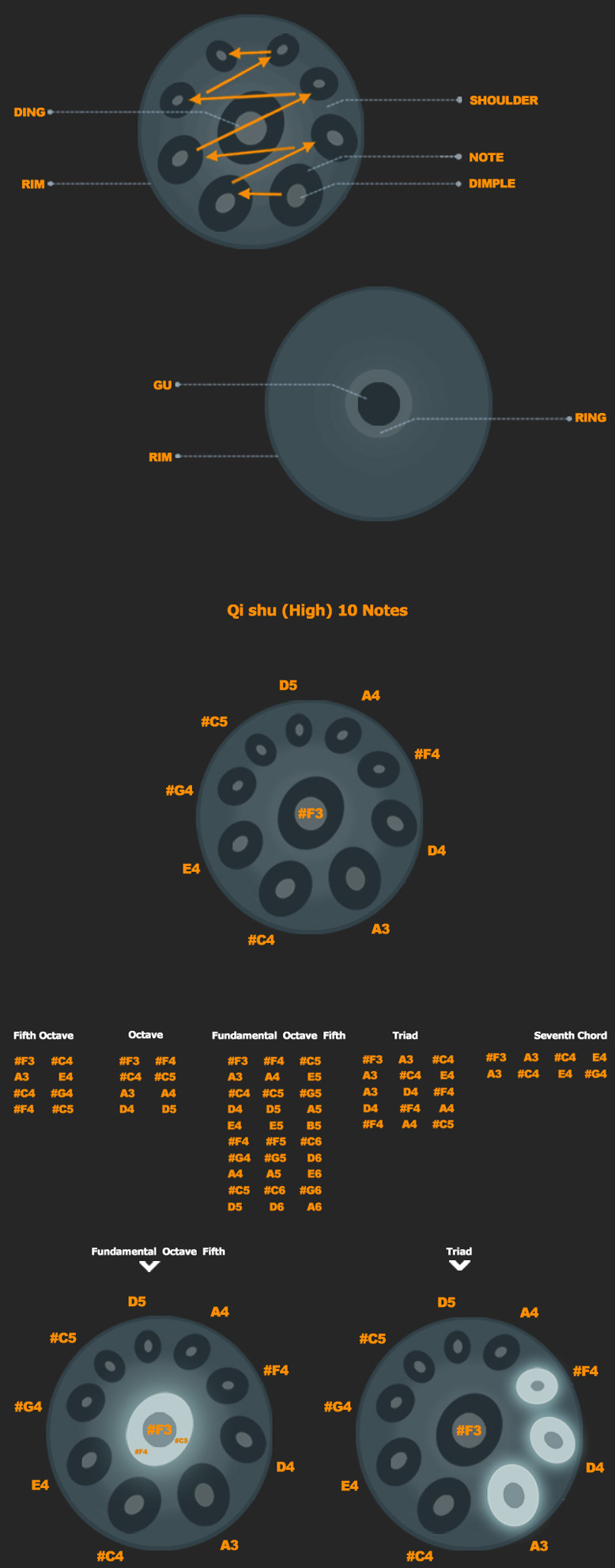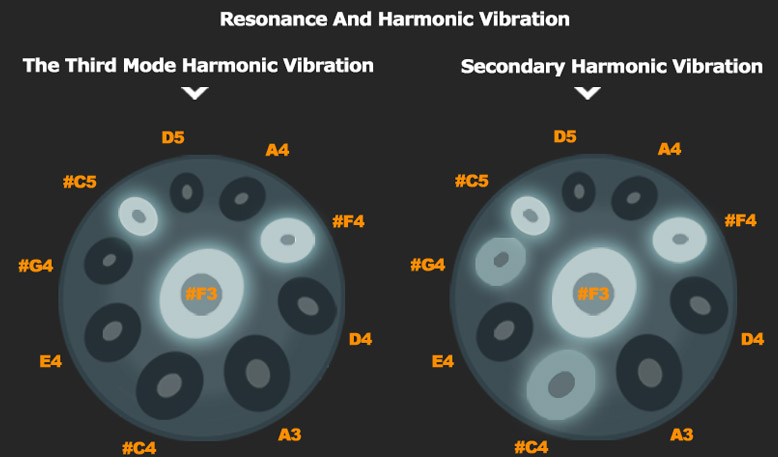About Handpan
Handpan is a term for a group of musical instruments resulting from a growing worldwide interest in the Hang, an instrument invented by Felix Rohner and Sabina Schärer. The instrument is constructed from two half-shells of deep drawn nitrided steel sheet glued together ar the rim leaving the inside hollow and creating a distinct UFO shape. The Ding side has a center note hammered into it and seven or eight tone fields hammered around the center. The Gu side has a rolled hole in the center with a tuned note that can be created when the rim is struck. Some special scales have notes in the Gu side.
The notes are laid out in a cross pattern in the tone circle from low to high so that with a specific orientation of the Handpan, the player can ascend or descend the scale by alternating using the left and the right hands to strike the tone fields. Each tone field has multiple overtones oriented specifically in the flattened field with a dome at the center. Typically there is a fundamental tone, an overtone tuned to octave above that fundamental, and an additional overtone a fifth above that octave. In some high notes like D5 and E5, the third mode could be tuned to fourth or third octave. Some makers simply remove the third mode in the high notes. The GU side of Handpan producing together with the air in the cavity a Helmholtz resonance similar to ghatam.
Handpan are often used for chamber music, improvisation, accompagnement, solo, meditation ensemble. Nowadays, it is also applied to music therapy,background music, or all forms of performing arts like street arts or fashion shows. In China, Handpan are often appear on “the literati Gallery”, Buddhism festival .


